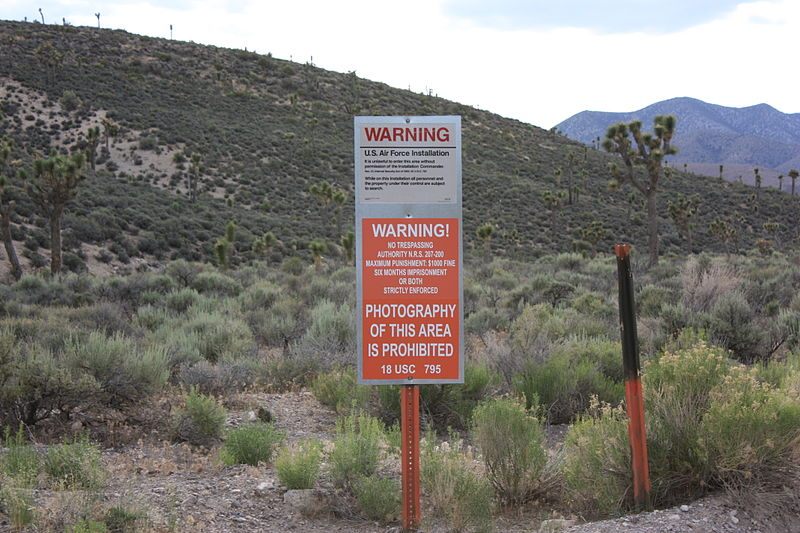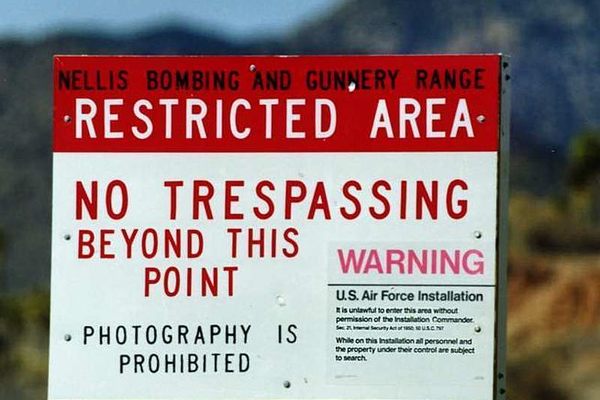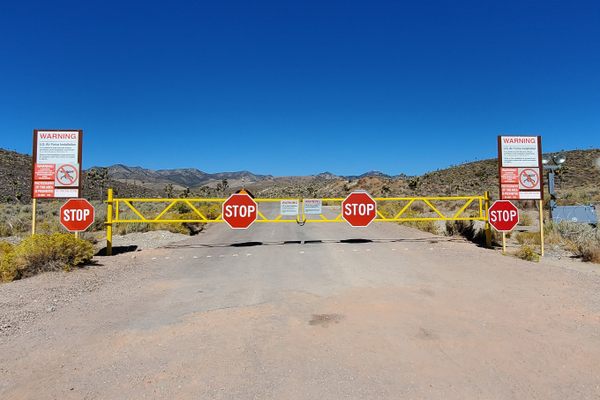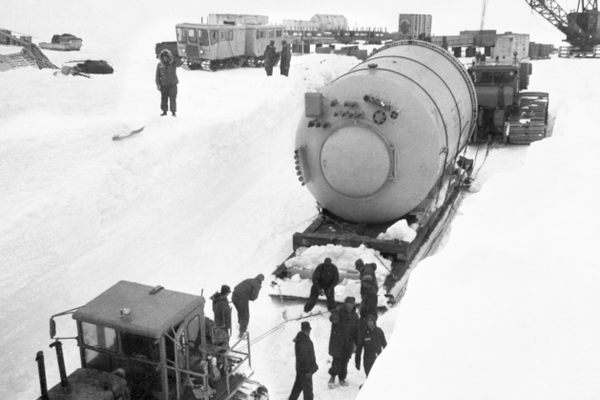A Short History of Area 51’s Shady Expansion

Area 51 keeps growing… (Image: Google Maps)
Area 51, everyone’s favorite military test site turned alien conspiracy theorist hub, is growing—whether its neighbors like it or not.
The Associated Press reports that the huge and ostensibly top-secret base in Nevada plans to take over a 400-acre patch of former mining land that the base has come to encircle following a number of expansions over the decades. The owners of the land have been offered $5.4 million to give it up. But they say that’s not enough.
“Why don’t they ask themselves what it cost my family over the years in blood, sweat, tears and money?” landowner Joseph Sheahan said, according to the AP. Sheahan and his relatives have owned the land for almost 130 years.
The Air Force set a September 10 deadline for the acceptance of the $5.4 million offer, but the landowners refused to back down. Now, the matter is being handled in federal court. Sheahan and the others say they will continue to fight to receive what they consider to be a fair amount for their land: around $29 million.

The U-2 spy plane. Probably not alien in origin. (Photo: Nyenyec/Wikipedia)
This is not the first time that Area 51 has experienced growing pains. When the CIA established the Groom Lake facility back in 1955, the secret testing grounds measured just six miles by 10 miles. Today, the AP story notes, the borders of the base are now almost twice the size of Delaware, incorporating over 4,500 square miles of land.
Originally established to facilitate the creation and testing of the top-secret U-2 spy plane, the base was built on a former Army airfield that had been used in World War II for bombing tests. The base was significantly expanded to 600-some square miles in the 1960s, when a new airstrip and a cluster of fresh buildings were installed.
In 1984, the government, citing national security concerns, seized another 89,000 acres of public land to use as a restricted buffer zone for Area 51. In his book Dreamland, Phil Patton explains how this move gave rise to conspiracy theories:
Once you could walk almost up to the base. But after too many curious citizens, including Greenpeace demonstrators protesting at the adjoining nuclear test site, had disturbed their privacy, the Air Force in 1984 went to the Bureau of Land Management, then to Congress, and had large tracts of public land around the base declared part of the Nellis Air Force Base Bomb and Gunnery Range. But two high points, which allowed a glimpse of the base to intrepid hikers, had remained accessible. By the late eighties, the spot began to draw crowds and television crews. That’s when the legend began.

This sign probably gets moved out a few inches every year. Tricky. (Photo: Tim1337/Wikipedia)
By the early ‘90s, during which the base grabbed up another 4,000 acres of land in the Groom Mountains, the site had become shorthand for shenanigans between extraterrestrials and the U.S. government. Area 51 appeared in shows like The X-Files and attracted a devoted culture of UFO hunters, who turned the nearby town of Rachel into a kitschy hub of alien fandom. With this new attention fueled speculation about what in the hell was really going on in there.
The facilities on the base have continued to improve and expand through the years, observed via satellite images and paranoid investigators. Major new facilities were built around 2007, causing a bit of a stir, but as was reported in a Wired article that year, the development was likely the result of post-9/11 military growth, not a spike in alien research.
It remains to be seen whether the current federal court filing will result in Sheahan and the other landowners’ property being seized at a less-than-ideal price. Regardless, it’s a pretty safe bet that Area 51, and all the mystery surrounding it, will be sticking around for decades yet.














Follow us on Twitter to get the latest on the world's hidden wonders.
Like us on Facebook to get the latest on the world's hidden wonders.
Follow us on Twitter Like us on Facebook